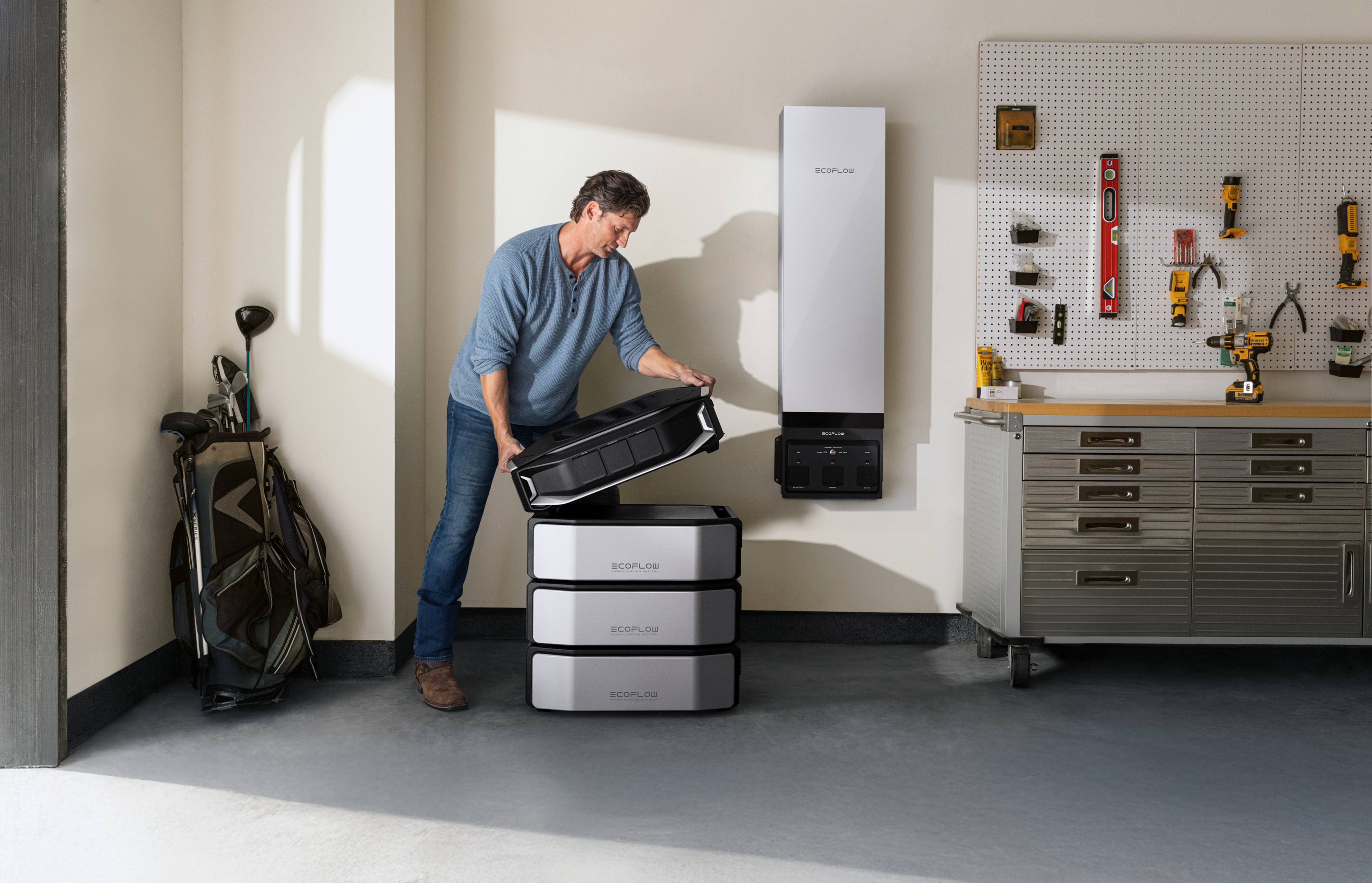Long-Duration Energy Storage: What It Is, Why It Matters, and How Close We Are
The power grid is changing quickly. With more energy coming from solar and wind, we have plenty of clean power when the sun is shining and the wind is blowing. But what happens when the air is quiet or it's dark? This is where a new generation of technology comes in. It can store that clean energy for hours, days, or even weeks, making sure we always have power.
What Exactly Is Long-Duration Energy Storage
This technology is all about holding onto large amounts of energy for extended periods, typically defined as 10 hours or more. It's a big step up from the standard batteries we see today, which usually provide power for only a few hours. Think of it as the difference between a power bank for your phone and a full-blown backup generator for your entire neighborhood.
Not Just a Bigger Battery
Lithium-ion batteries are the most prevalent type of energy storage. They are perfect for short-term demands, such as smoothing out short power outages or addressing the evening spike in electricity demand. They are the most common deployments today; however, they are usually set up for less than a day. Long-term energy storage, on the other hand, is made for endurance. It fills in the gaps when renewable sources aren't accessible for long periods of time, such as hours or days, and it supports reliable services that last inter‑day, multi‑day, or even seasonal.
Solving the Duration-Application Puzzle
How "long" is enough? The answer depends on what the storage system needs to do. A battery that lasts 6 hours might be plenty to keep the lights on for a normal evening, but a grid that gets most of its power from solar might need 10 to 100 hours or more of storage to get through a lengthy run of cloudy winter days. This "duration-application" difficulty means that there isn't a single solution that works for everyone. Instead, we need a range of storage alternatives that are designed for varied demands, such as daily balancing, multi-day shifts, and seasonal changes.
This flexibility is important for developing a clean energy future that is both reliable and economical. As we add more renewables, the need for diverse and adaptable storage solutions will only grow.


Benefits of Long-Term Energy Storage for the Power Grid
Long-term energy storage is more than simply a technical idea; it has real-world benefits that are changing our energy systems. It gives us the stability we need to fully embrace renewable energy, which makes our power supply greener, more reliable, and cheaper. This technology is the key to making the electrical grid completely carbon-free.
Making the Most of Renewable Energy: The biggest challenge for wind and solar is their variability. Storage solves this by saving excess energy during sunny or windy periods and releasing it when generation is low, preventing clean energy from going to waste and reducing our reliance on fossil fuels.
Keeping the Power Grid Steady and Reliable: By balancing supply and demand over longer periods, these systems make the power grid more stable and reliable. They also act as a backup during extreme weather events or grid failures, keeping critical services running when they're needed most.
Cutting Out Dirty Power Plants: To meet peak electricity demand, the grid often relies on "peaker plants," which burn fossil fuels and are expensive and polluting. Long-duration energy storage offers a clean alternative, directly cutting greenhouse gas emissions and improving air quality in nearby communities.
Saving Money and Boosting Energy Independence: Storing low-cost renewable energy for use during high-priced peak hours saves money for everyone. It can also delay or avoid expensive upgrades to grid infrastructure and strengthen energy independence by reducing the need for imported fuels.
These benefits show that investing in storage is about more than just keeping the lights on. It's a strategic move toward a more secure, sustainable, and economically sound energy future.
A Look at Different Long-Duration Energy Storage Technologies
There is no one best technology for long-term energy storage. Instead, a variety of alternatives are emerging, each with its own capabilities. There are four basic types of these technologies: chemical, electrochemical, thermal, and mechanical. Knowing about these choices helps us figure out how to make a grid that is flexible and dependable for the future.
At the prosumer level, modular whole‑home systems like EcoFlow's DELTA Pro Ultra X pair high‑power inverters (12–36 kW), expandable batteries (12–180 kWh), <20 ms transfer with smart panels, and up to 10 kW PV input to provide multi‑day backup and time‑of‑use optimization—bridging personal resilience and clean energy use without conflating them with utility‑scale LDES.
| Technology | Primary Storage Form | Typical Duration (hrs) | Round-Trip Efficiency (%) | Key Limitations |
| Pumped-Storage Hydro (PSH) | Gravitational Potential | 10–25 | 70–80% | Geographic constraints, environmental impact 16 |
| Compressed Air (CAES) | Pressure Potential | 6–100+ | 40–70% | Reliance on underground geology 18 |
| Vanadium Flow Battery (VRFB) | Electrochemical | 8–100+ | 65–80% | Low energy density, vanadium cost |
| Green Hydrogen | Chemical | 100–thousands | 30–50% | Low round-trip efficiency, high infrastructure cost |
Mechanical Storage
This is the most established category, using physical forces like gravity or pressure to store energy.
Pumped-Storage Hydropower (PSH): This method uses surplus electricity to pump water to a higher reservoir. When power is needed, the water is released to flow back down through turbines. It's highly efficient and has a very long lifespan, but requires a specific geography.
Compressed Air Energy Storage (CAES): CAES uses electricity to compress air and store it in underground caverns. The compressed air is later released to drive a turbine. This technology is great for large-scale storage but is limited to areas with suitable geological formations.
Electrochemical Storage
These technologies store energy in chemical compounds, with flow batteries being a leading example for long-duration needs.
Flow Batteries: Unlike standard batteries, flow batteries store energy in liquid electrolytes held in external tanks. This design allows power and energy capacity to be scaled independently, making them ideal for long-duration applications. They are also very safe and have a long cycle life, though they have lower energy density than lithium-ion batteries.
Novel Chemistries: Researchers are also developing new battery types, such as those using abundant materials like zinc and iron, to create lower-cost and safer alternatives.
Thermal Storage
This approach involves storing energy as heat in materials like molten salt, rocks, or sand.
Molten Salt Storage: Often used with concentrated solar power plants, this technology stores the sun's heat in molten salt at very high temperatures. The heat is then used to create steam and generate electricity whenever it's needed, even overnight.
Carnot Batteries: This emerging concept uses electricity to run a heat pump, storing thermal energy in low-cost materials. When power is needed, a heat engine converts the stored heat back into electricity.
Chemical Storage
This method stores energy in chemical bonds, with green hydrogen being the most prominent example for very long-term needs. Surplus renewable electricity can power an electrolyzer to split water into hydrogen and oxygen. The hydrogen can be stored for weeks or even months and later used in a fuel cell or turbine to generate electricity, making it suitable for seasonal storage. Its main challenge is the energy lost during the conversion process.
Each of these technologies plays a different role, from daily grid balancing to seasonal energy shifting. A mix of these solutions will be needed to create a truly resilient and decarbonized energy system.


Overcoming the Hurdles for Long-Duration Energy Storage
Long-term energy storage has a clear potential, but there are a few problems that need to be solved before it can be widely deployed. These problems are not only technological; they are also economic and regulatory. Innovators, investors, and legislators need to work together to solve them. To get to a clean and reliable energy future, you need to be able to get over these challenges.
High Costs at the Start: Many LDES technologies are still in the early stages of commercialization and have high initial capital costs compared to traditional power plants or short-duration batteries. Bringing these costs down through innovation and scaling up manufacturing is a top priority.
Policy and Market Challenges: Current electricity markets were often designed for traditional power plants and don't always properly compensate storage for the valuable services it provides, like grid stability and resilience. Creating new market rules and supportive policies, such as tax credits and long-term contracts, is crucial to attract investment.
Technology Still Developing: While some technologies like pumped hydro are well-established, many newer solutions are still being refined to improve their efficiency, lifespan, and reliability. Continued research, development, and demonstration projects are needed to prove their performance at scale.
Complex Infrastructure and Permits: Building large-scale storage projects, especially those with specific geographical needs like PSH and CAES, can involve long and complex permitting processes. Streamlining these procedures and planning for necessary grid infrastructure upgrades will help accelerate deployment.
To solve these problems, everyone in the energy sector needs to work together. These problems can be solved with wise policy and targeted investment, making the grid cleaner.
Get Involved in the Energy Future
The move to a clean energy system is something that everyone needs to work on, and making storage technologies better is a big part of that. We can all help make the power system more sustainable and resilient for future generations by remaining informed and supporting policies that foster new ideas.
If you're ready to bring the same dependability to your own house, EcoFlow's DELTA Pro Ultra X is one option. It's a modular, multi-day backup system that lets you use sustainable, clean energy and be energy-independent at the same time. It's a little step toward the same strong future we're all working toward.
FAQs About Long-Duration Energy Storage
Q1: What are the safety advantages of modern batteries over lithium-ion ones?
New battery chemistries like flow and zinc-ion make batteries safer. Many flow batteries use nonflammable water-based electrolytes. This eliminates the fire risk of lithium-ion battery organic solvents. Aqueous zinc-ion batteries are safe because they use eco-friendly ingredients and fire-resistant electrolytes. These make them better for grid-scale applications, especially in populated regions.
Q2: How do governments worldwide improve long-duration energy storage?
Governments use rules and money to accelerate development. The US Department of Energy's "Long Duration Storage Shot" initiative cuts costs heavily and funds demonstration projects. China has set high national and provincial energy storage deployment ambitions, attracting massive investment. Clean energy legislation and financing for innovative grid flexibility and security projects in the EU also encourage storage.
Q3: Given that pumped hydro storage is a proven technique, why not expand it?
Pumped-storage hydropower is effective and well-established, but various limitations limit its growth. Geography is the primary obstacle because it requires land with two massive water reservoirs at different heights. Large-scale building projects can also harm local ecosystems, landscapes, and the environment. They also face complex development and permitting processes that can take years.